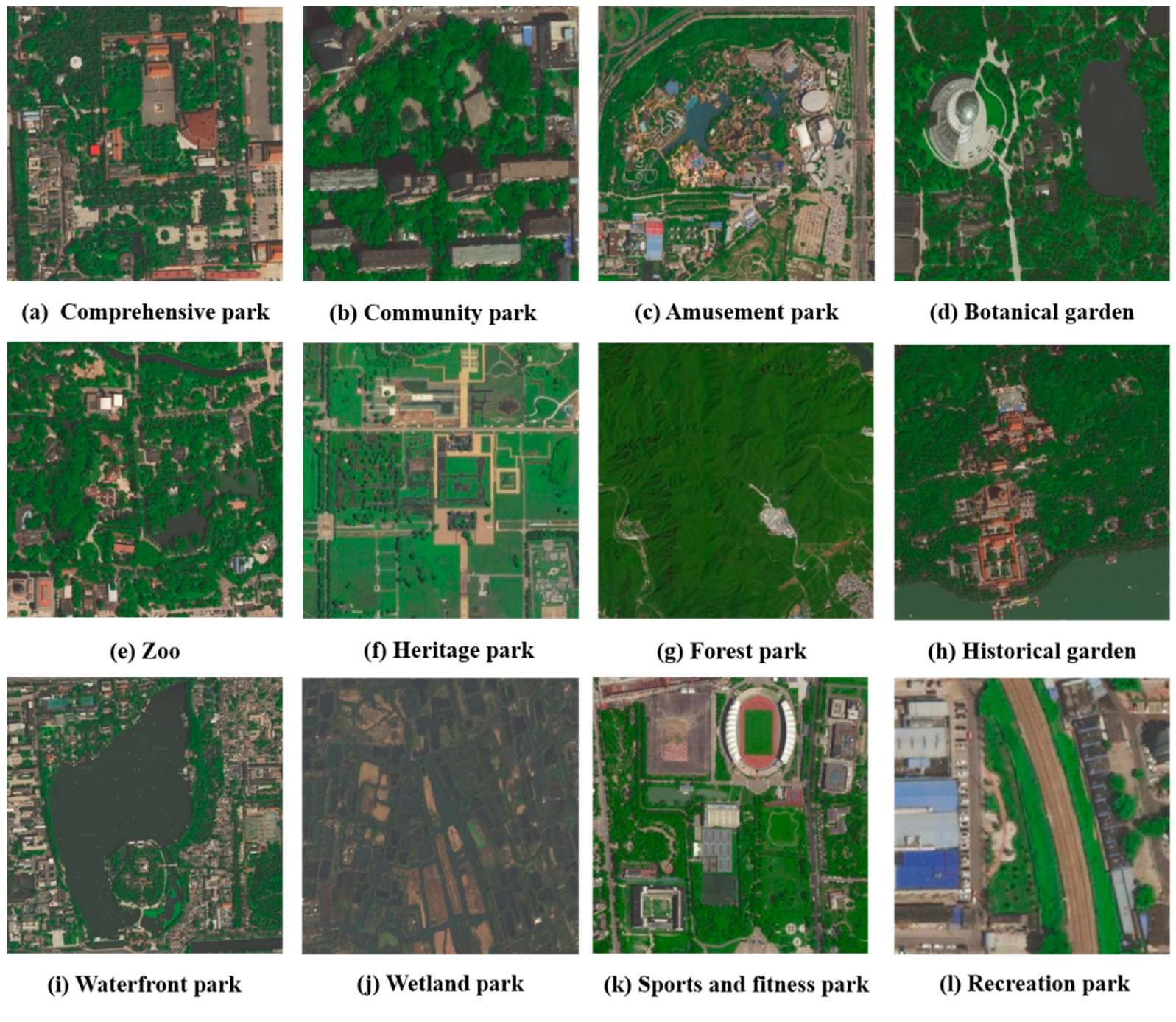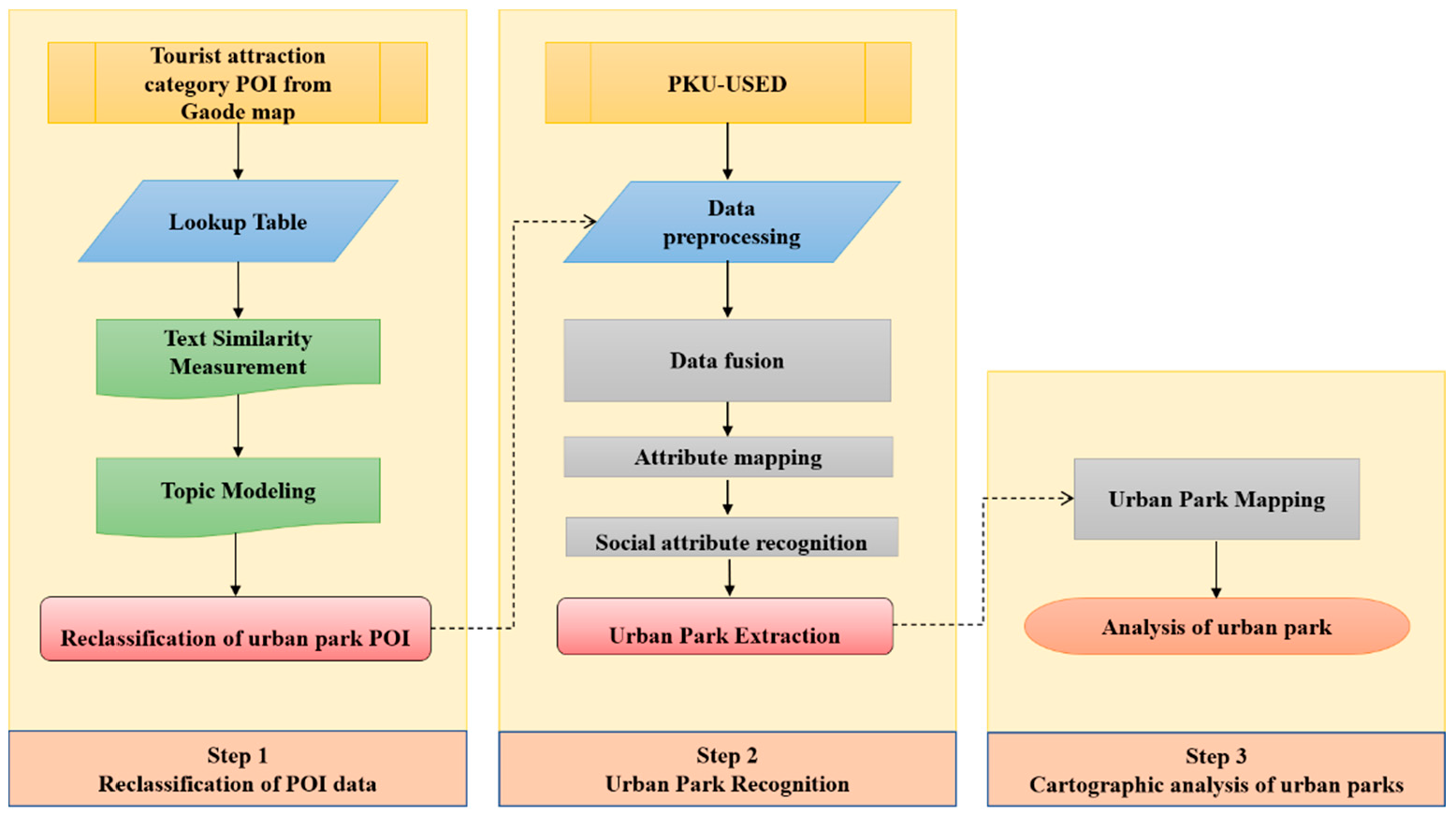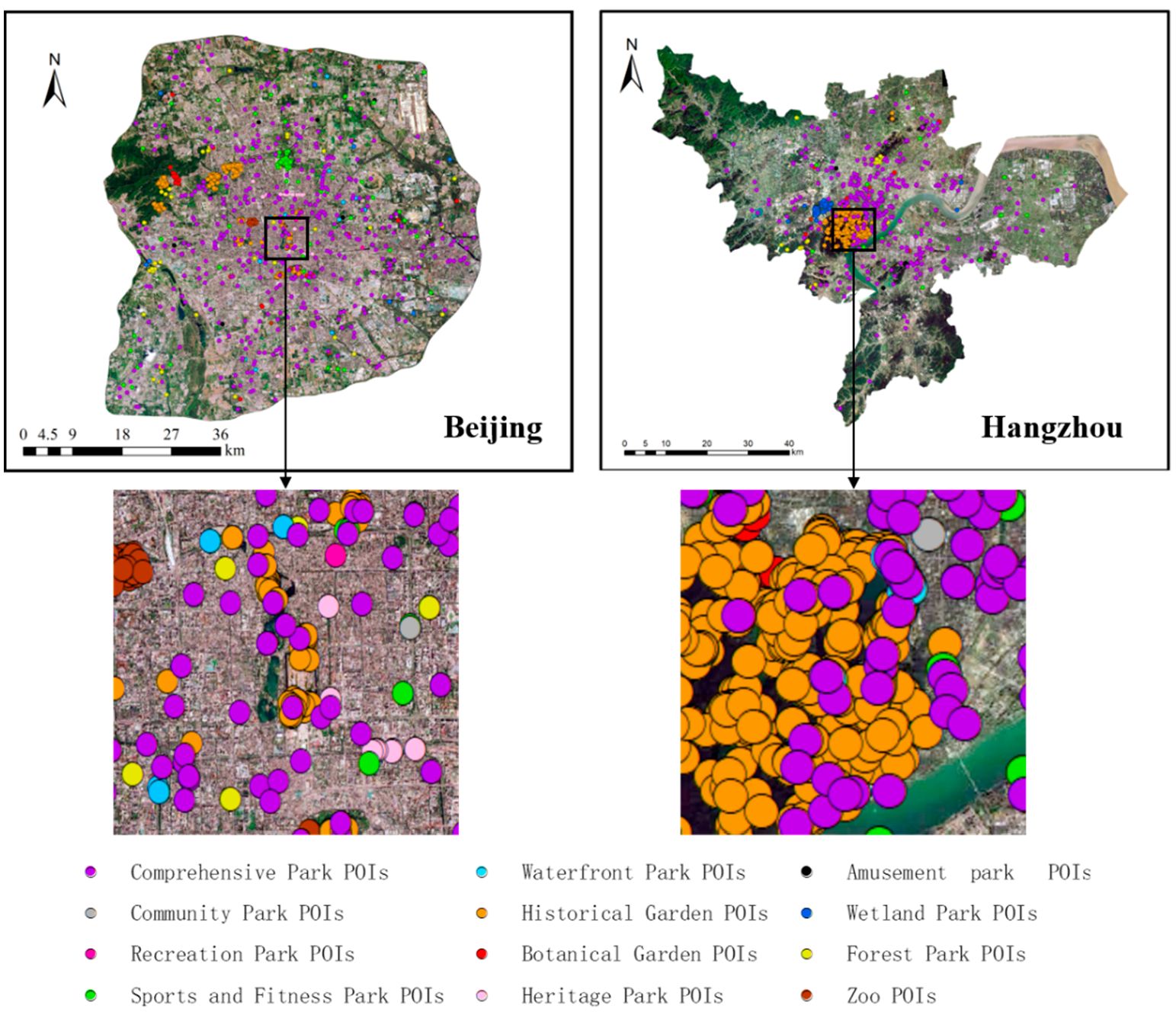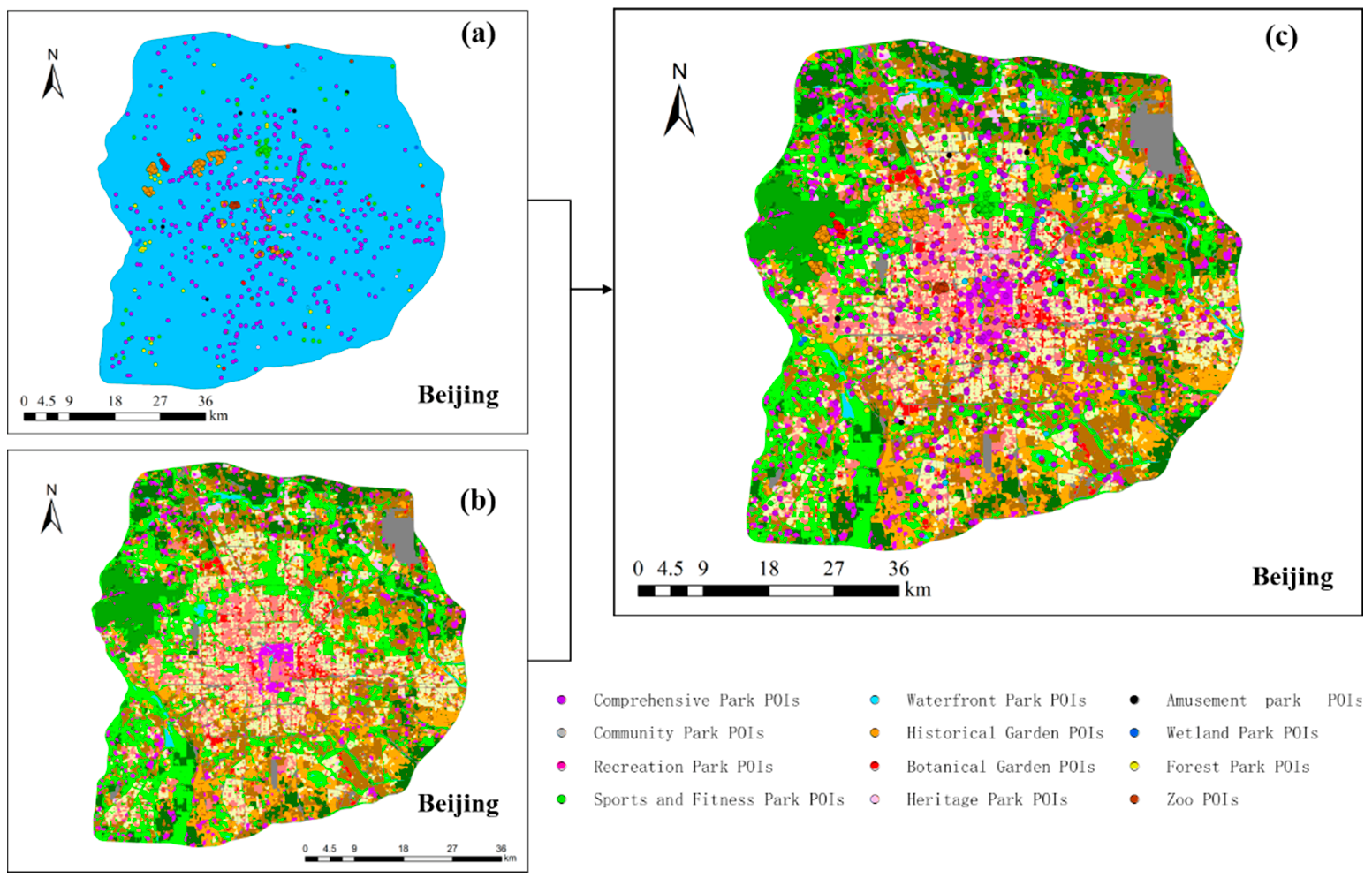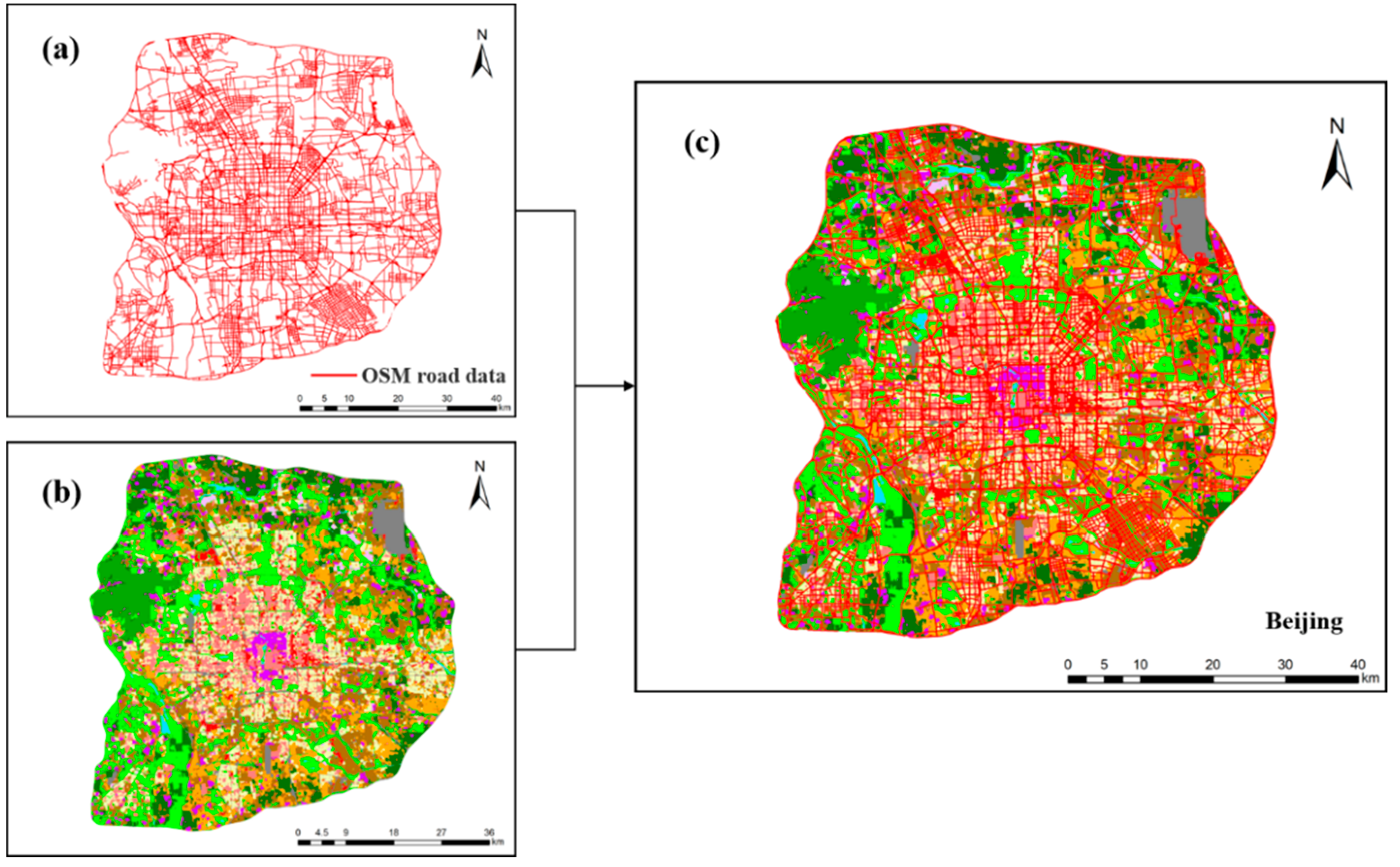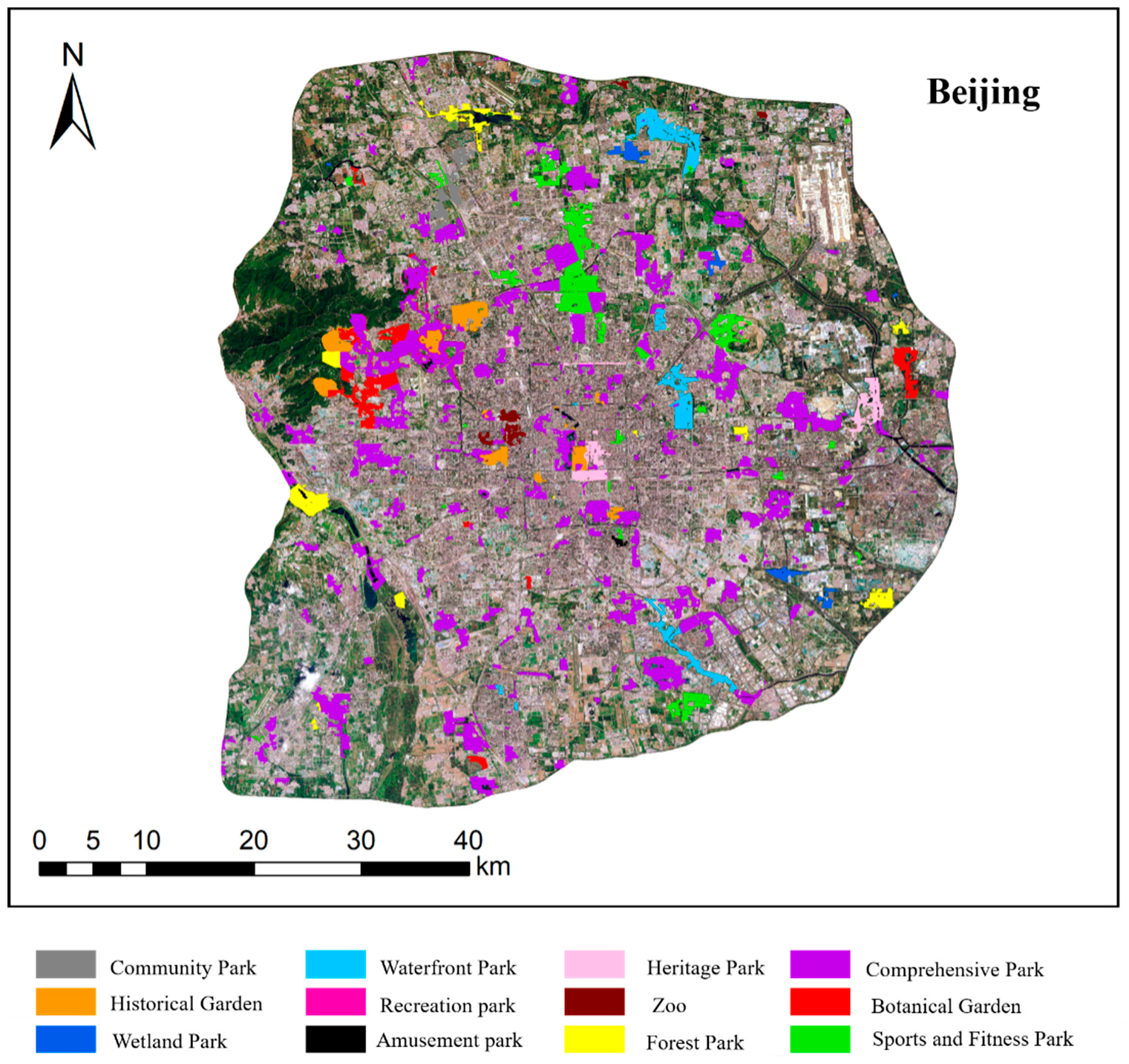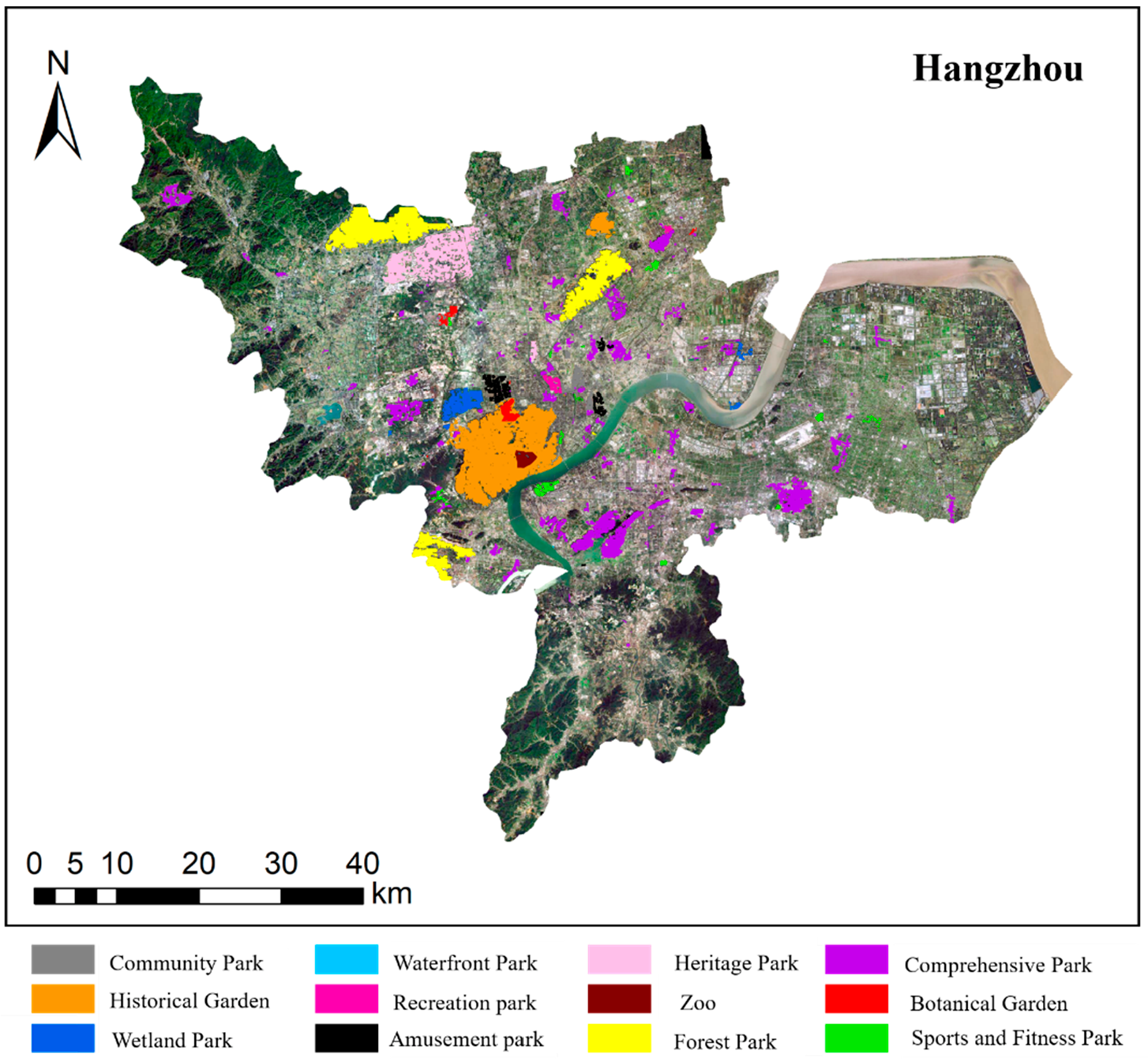1. Introduction
Urban green spaces play an important role in urban ecosystems [
1,
2], and they can include many types of spaces, such as protective green spaces, educational and scientific green spaces, and residential land used as accessory green spaces. Changing the composition and layout of urban green spaces can improve the quality of ecosystem services, thus ensuring more sustainable urban development [
3]. Urban parks are an integral part of urban green spaces and provide important ecosystem services [
4]. They impact the ecological balance, the environmental beautification, and the quality of life for residents in cities. In recent years, the rapid urbanization process has created large areas of artificial, impervious surfaces that have replaced the native natural areas such as grasslands, wetlands, and forests [
5]. This has led to a year-over-year reduction in urban green spaces [
6] that has also caused a series of problems, such as changes in the urban environment [
7], a decline in the quality of life for urban residents [
8], and the destruction of urban ecosystems [
4].
As the number of studies regarding urban parks increases, detailed maps that include the social functions and the spatial structures of urban parks are in high demand. Any city, regardless of its level of development, faces the challenge of effective planning and construction of urban parks, especially as creative land use options and variations continue to expand. Data extraction of urban parks is an important step for urban park mapping that can identify various types of urban parks using data fusion and accurately presenting them on a map. According to the GB 51346-2019 Urban Green Space Planning Standards (the recommended national standards of China) [
9], urban parks in China are divided into 12 types (
Figure 1), each of which has a specific social function (
Table 1). For example, botanical gardens have been described as scientific research units that investigate, collect, and share scientific knowledge about plants as well as provide gardens that the public can tour and enjoy, whereas community parks have been categorized as centralized green spaces for the sole benefit of residents. Each type of urban park has been linked to its surrounding environment and the quality of life for the residents. Thus, urban park mapping is crucial for a more refined analyses of urban development, planning more sustainable and healthy cities.
In recent years, the acceleration of urbanization has led to the formation of, as well as changes to, various functional zones, such as residential, commercial, and industrial areas, in cities to meet the residents’ diverse socio-economic needs [
10,
11]. However, the diversity of urban parks as well as, for some, their lack of unique physical features to differentiate them have limited the information acquired using remote sensing data extraction. As a basic unit of urban planning and management, urban functional zone (UFZ) data have played an important role in analyzing spatial structures of cities and understanding their physical and social attributes [
12,
13]. UFZ-based data extraction has been the basis for documenting the processes of urbanization and construction, evaluating the urban ecological environment, analyzing urban spatial patterns, and promoting zoned spatial planning and sustainable development. For example, Hu et al. [
14] extracted parcel cells from OpenStreetMap (OSM) road data and used points of interest (POIs) data and Landsat images to produce urban land use maps according to similarity and thresholding methods. Zhang et al. [
15] used very-high-resolution (VHR) satellite imagery and POI data to classify UFZs in Beijing using a hierarchical semantic cognition (HSC) approach that effectively delineated UFZs. Huang et al. [
16] proposed a semi-transferred deep convolutional neural network (STDCNN) method for maintaining the integrity of urban land-use patterns and improving the accuracy of urban land use maps. Du et al. [
10] proposed a target-based mapping method for UFZs extracted using VHR remote sensing imagery, which overcame the shortcomings of predetermined mapping units. Voltersen et al. [
17] used land cover information to characterize urban neighborhoods and then applied a collaborative approach based on knowledge and statistical feature selection to define urban structure types. Zhang and Du [
18] proposed a top-down and bottom-up iterative approach to land cover and UFZ classification, which significantly improved land cover and functional zone mapping. Du [
19] also proposed a method for large-scale UFZ mapping that combined remote sensing imagery and open-urban data using a combination of latent Dirichlet allocation (LDA) and a support vector machine (SVM) to classify segmented UFZs by integrating physical features from the remote sensing imagery with the attribute features from POI data. Although these studies have been able to differentiate UFZs and refine basic information extraction, related studies on UFZs have overlooked other data, such as the spatial distribution and social attributes of urban parks. Therefore, data extraction based on UFZs cannot distinguish between different types of urban parks.
As crowd-sourced geographic data have become increasingly accessible, its application in urban research has expanded as well [
20,
21,
22]. As compared to remote sensing data, crowd-sourced geographic data have obvious advantages: The “sensors” involved in obtaining the data are individuals using smart devices (e.g., mobile phones, computers, etc.) that reflect their activities at a granular level, and they capture socio-economic characteristics [
23]. As UFZ data do not include these two characteristics, crowd-sourced geographic data can be used to supplement UFZ data [
24]. In the era of big data, various sources for crowd-sourced geographical data are available, including mobile phone information, digital maps, public transportation information, etc., all of which include multitudes of data points. For example, POI data contain rich contextual information (e.g., name, address, coordinates, type, etc.) [
25] that offers in-depth details, large coverage areas, and accurate location information. In addition, POI name attributes are described using natural language [
26]. However, POI data are expressed in the form of point-feature information, which only represents data related to the physical location; thus, POI data must be combined with other remote sensing data to extract the scope and type data of urban parks. While recent studies have integrated UFZ and POI data for their purposes, none have employed a similar method for urban park mapping, but they have suggested that using the attribute information extracted from POI data could be beneficial for urban parks mapping [
27,
28].
In conclusion, UFZ data have been widely used for urban planning purposes, including for the identification of urban green spaces, but these data cannot accurately identify urban parks by type, which is why the integration of POI and UFZ data extraction is so important to study. However, there are various challenges. First, POI data can only provide point-location and point-feature information about an urban park, which does not accurately express the scope, area, and type. Second, remote sensing images only reflect the visual characteristics of a location and cannot include the social attributes determined by human activities. Therefore, combining existing UFZ data with crowd-sourced POI data could be an effective method to extract details and more accurately classify urban parks by type. This study proposes an urban park extraction and classification method that combines UFZ and POI data. First, the POI data were automatically reclassified using an improved natural language processing (NLP) to link urban park types and POIs. Second, the reclassified POI and UFZ data were then integrated to categorize urban parks by type using attribute mapping and social attribute recognition. Finally, experimental analyses were performed in Beijing and Hangzhou to verify the effectiveness of the method developed in this study, as well as a comparative analysis of each type of urban park classified.
